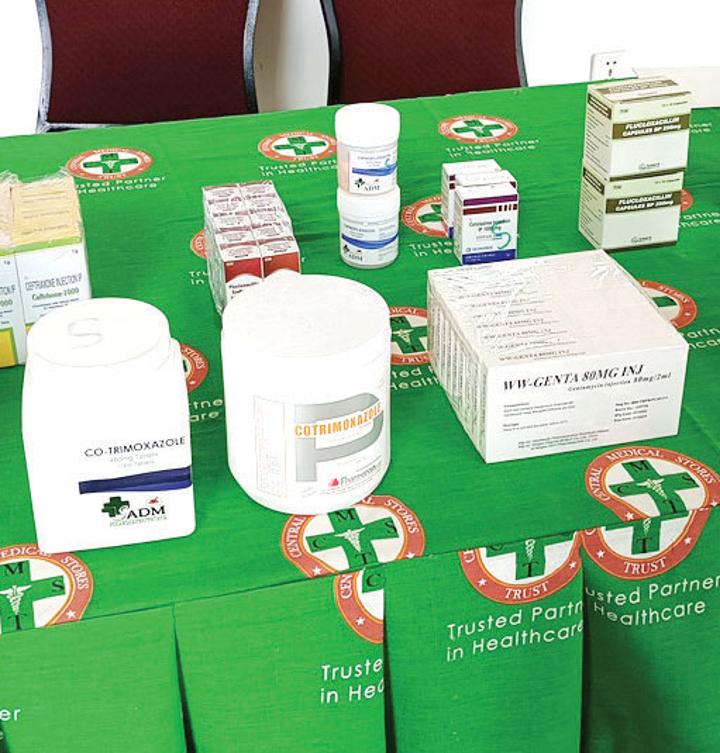Africa-Press – Malawi. Antimicrobial resistance, one of the biggest threats to global health, is being amplified by consumption of meat and meat products from domestic animals treated with antibiotics and, as TAONGA SABOLA highlights, doctors are worried about the situation.
The words ‘Rest in Peace’ inscribed above her name on the cross planted on her grave at least provide some comfort to her relatives. For close to five months, Mercy spent sleepless nights in unbearable pain with no solution in sight.
At the hospital, doctors could only give her painkillers as her body had reportedly already taken up too much of strong antibiotics through her consumption of chickens.
“We were told her body had developed resistance to antibiotics and, therefore, the top-level antibiotics could no longer work.
“After noticing no changes, we had to ask hospital authorities to discharge her because it was becoming more expensive to be in hospital where no change was coming,” Mercy’s uncle explains as he spreads out a velvety handkerchief to wipe tears from his face.
Mercy had developed antimicrobial resistance (AMR)—a condition that occurs when bacteria, viruses, fungi and parasites change over time and no longer respond to medicines, making infections harder to treat and increasing the risk of disease spread, severe illness and death.
A doctor who once treated her, but could not provide more details due to ethical issues confirmed that the patient had developed AMR. Dr Peter Mwale of the Central Veterinary Laboratory admits that AMR is becoming a big problem in animal production as well as in humans.
According to Mwale, normally farmers treat their animals with antibiotics whenever they are sick. “So these bacteria that are there and cause diseases have over time developed resistance. This is because whenever the animals are sick, they are exposed to the same antibiotics and the bacteria develop resistance.
“So the next time they are treating the bacteria with the antibiotics it never works and they end up losing their flock,” Mwale said.
He added that meat and meat products from the animals that have developed AMR end up being consumed by people who end up being treated with the same antibiotics when they fall sick.
“In the end, those antibiotics will not work in our bodies, which is making our treatment in human health to be a challenge as well,” Mwale said. Dr Ronald Chitatanga once worked at Kamuzu Central Hospital in Lilongwe and recalls the challenge of handling AMR cases.
He said when a patient goes to the hospital, doctors diagnose the cause of that condition and prescribe which antibiotics work best to treat that condition.
Chitatanga added that the problem with AMR is that the patient does not respond to the prescribed antibiotics, a development which poses a big challenge in human treatment.
In such scenarios, doctors just resolve to be prescribing painkillers and, in other instances, nutrition supplements. “Unfortunately, sometimes patients opt to go home because they feel they are not being assisted by the hospital,” Chitatanga said.
He noted that antibiotics are classified according to how they are going to work, adding that there is the first line, second line and third line of antibiotics. He said the third line is kept for infections that are difficult to treat.
“Now we have seen that in Malawi, some animals are being given antibiotics which we keep for the last resort. This means that if you get an infection from an animal that is resistant to that last-resort antibiotic, we may not be able to treat you because that last-resort antibiotic is not going to work in the patient,” Chitatanga said.
National Coordinator for Antimicrobial Resistance Dr Watipaso Kasambara said antibiotic resistance is a public health threat to modern medicine. Kasambara said if Malawi does not take good care of antibiotics, the country may find itself in a situation where it may not be able to treat most of the remediable infections.
She said doctors are seeing resistance in Fluoroquinolones drugs like Ciprofloxacin as well as Meropenem, which is one of the critical drugs in Malawi.
“The problem keeps growing bigger and bigger over the years. When we started monitoring antimicrobial resistance, we keep seeing it on a daily basis and it keeps getting bigger,” Kasambara said.
Queen Elizabeth Central Hospital Director Sam Mndolo said just like most hospitals in the country, the facility is also struggling with antimicrobial resistance control and appropriate antimicrobial use.
Mndolo said although people in the medical field have known about the dangers of AMR for a long time, it is only recently, in 2015, when the World Health Organisation (WHO) declared it as a global public health emergency. He said Malawi is being compelled to train healthcare workers again to understand the depth of the problem and eradicate it.
“Concerning the challenges, since we do not manufacture our own antimicrobials, the supply chain is a bit of a problem. We are supposed to have a much wider range of antimicrobials so that we do not keep using the same types.
“The more you use an antimicrobial, the higher the chances of developing resistance. So we are working hard to diversify our choices of antibiotics.
He added that the Ministry of Health has managed to rehabilitate the hospital’s laboratory for more evidence-based therapy. “We need to provide enough resources so that we can keep this system running consistently,” Mndolo said.
Secretary for Health Dr Charles Mwansambo admitted that AMR is becoming a big problem in Malawi. Mwansambo blames the AMR crisis on the practice of just buying antibiotics off the shelf when people feel like they are sick.
The principal secretary, himself a medical doctor, said antibiotics are supposed to be prescribed by specialists, adding that pharmacists are supposed to demand a doctor’s prescription before releasing the drugs.
WHO Country Representative for Malawi Dr Neema Kimambo said globally, antimicrobial resistance is among the top 10 public health threats to humanity. Kimambo said if the problem remains unchecked, Africa could lose 4.1 million people by 2050.
“Why will they die? Because when they have antimicrobial resistance, it means they have pathogens but you don’t have antibiotics to manage those pathogens. So it becomes very important to ensure that we judiciously use the antibiotics that we have,” Kimambo said.
According to the Malawi National Action Plan (Nap) on AMR, there is an urgent need for the country to accelerate AMR mitigation efforts such as increase domestic financing and donor resource mobilisation for sustainable coordination and implementation of the Nap on AMR priority activities.
The Nap also calls for a need to increase awareness-raising activities among healthcare workers, financial decision-makers and the public to promote appropriate antimicrobial use in both English and Chichewa.
For More News And Analysis About Malawi Follow Africa-Press






